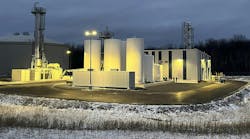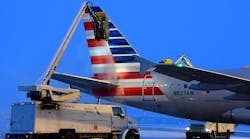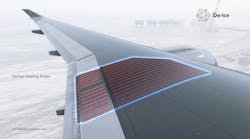Mitigating the environmental impact of deicing operations has continued to be a strong focus for the industry. In 2009, the Environmental Protection Agency unveiled its new proposed effluent guidelines to regulate deicing operations at airports — which have drawn sharp criticism from industry associations.
Regulation Basics
Under the proposed rule introduced last year by the EPA, primary commercial airports that conduct deicing operations with more than 1,000 annual scheduled departures, more than 10,000 annual departures and less than 460,000 gallons of fluid would be required to collect 20-percent of the spent fluid. The EPA’s recommended technology for compliance is glycol recovery vehicles. By EPA’s estimates, about 96 airports would be subject to the regulation.
Primary commercial airports with more than 1,000 annual scheduled departures, and more than 10,000 annual departures that use more than 460,000 gallons of fluid annually would be subject to a 60-percent collection rule. The EPA designated central deicing pads as best available technology (BAT) to meet compliance. According to the EPA, 14 airports would be subject to the 60-percent rule.
Airports would also be required to treat the fluid collected before discharge by recommended treatment processes, which include an anaerobic fluidized bed treatment system (AFB).
Also under the proposed rule, new sources of deicing fluid runoff would be subject to the regulation. “New Source” would apply to a new primary airport and a new runway constructed at a primary airport.
Among the benefits of the proposed rule asserted by the EPA include improved water quality adjacent to and downstream of about 70 airports around the country. The oxygen depletion, measured as chemical oxygen demand (COD), would be reduced by 39.9 million pounds a year.
In the EPA’s view, the rule is needed in addition to current permitting processes. “Although all airports have discharge permits, most permits require airports to prepare a stormwater pollution prevention plan and occasionally test their discharges. These permits do not include specific requirements for collection and treatment of deicing wastes. As a result, a number of airports have inadequate systems for collecting spent deicing fluids. Several large airports have no systems at all — their deicing wastewaters are all discharged untreated into local water bodies.”
The EPA has estimated the cost to the industry would be about $91.3 million annually.
Industry Response
In its comments submitted to the EPA, the National Air Transportation Association stated its concern about the agency’s uniform approach. “NATA is concerned that the EPA’s one-size-fits-all-approach to dealing with deicing runoff does not adequately account for the unique operations at our nation’s commercial service airports,” says Michael France, NATA’s director of regulatory affairs, in the association’s comments. “The specialized operations of individual airports and the effect their efficient operation has on the national airspace system do not lend themselves to this type of standardized approach to environmental regulation.”
And that concern has echoed throughout the industry. “I think overall we see a problem with a lack of real flexibility in what’s been proposed,” says Jessica Steinhilber, senior director, environmental affairs at ACI-NA.
In the ACI-NA’s comments submitted to the EPA, it points out that the agency did not accurately assess the environmental benefits. “We think the EPA has overestimated the amount of fluid being used,” she says.
In fact, ACI-NA asserted that the EPA’s approach could discourage the use of more environmentally friendly technology. “The way that the rule is set up, it doesn’t necessarily encourage pollution prevention practices,” she says. “There is no real incentive in the way the EPA has proposed the rule.”
The Air Transport Association agrees. “They are essentially, in our view, institutionalizing the use of glycol and setting up disincentives for pollution prevention. So to us, another aspect of this is that EPA needs to think much more carefully about how to incentivize pollution prevention,” says Elizabeth Merida, spokesperson at ATA, adding, “The industry has a very proactive record here in terms of trying to push toward much more environmentally friendly products. We clearly want to keep going in that direction.”
The largest concerns within the industry, however, have remained the overall negative impact the rule could have on safety, operations and cost.
In its comments submitted to the EPA, ATA asserted the agency did not aptly consider safety and operational impacts when it designated central deicing pads as BAT for airports to comply with the 60-percent collection rule, claiming certain design imperatives were not accounted for in the proposal. Also, ATA stated, the EPA did not account for safety imperatives involved with co-locating facilities that must accompany the deployment of deicing pads.
“Indeed, ATA is confident that siting CDPs of sufficient number and size (together with their necessary appurtenances) to handle 100% of the scheduled departures at EWR, LGA, JFK, BOS, and perhaps at other airports will prove impossible,” ATA stated in its comments.
In the area of cost, the ATA questioned the EPA’s assessment, stating that errors in the agency’s calculations alone accounted for a significant underestimate. In its calculations using the EPA’s metrics, ATA stated that annual costs to the industry would be about $179.7 million.
In addition to the EPA’s error in calculations, ATA claimed in its comments, EPA’s formula failed to account for numerous costs that would be incurred by many in the industry – including airlines. “The cost associated with operational impacts is a key example: the added fuel, labor and other costs incurred by airlines as a result of operational inefficiencies imposed under the Proposed Rule fall exclusively on airlines. This potentially massive cost is not captured by an analysis focused on airport costs, even if it is assumed that 100% of these costs are passed through to airlines (as we believe they are).”
Citing such flaws in the proposal, the ATA, along with some other associations, have called for the rulemaking to be abandoned.
When asked for a response regarding comment submissions, the agency stated, “EPA received 58 comments during the six month public comment period. We are thoughtfully considering our responses to these comments as we prepare the final ELG.”
The EPA expects to finalize the guidelines in early 2011.




